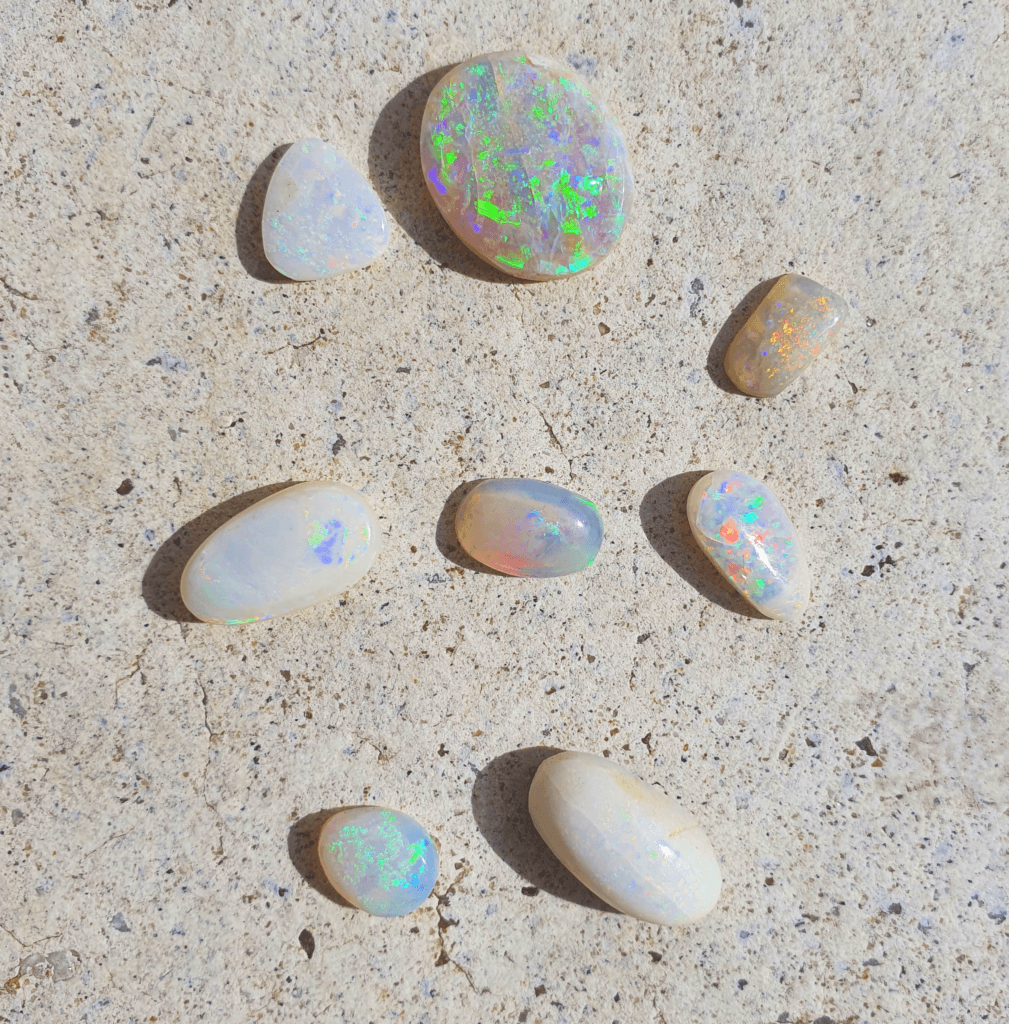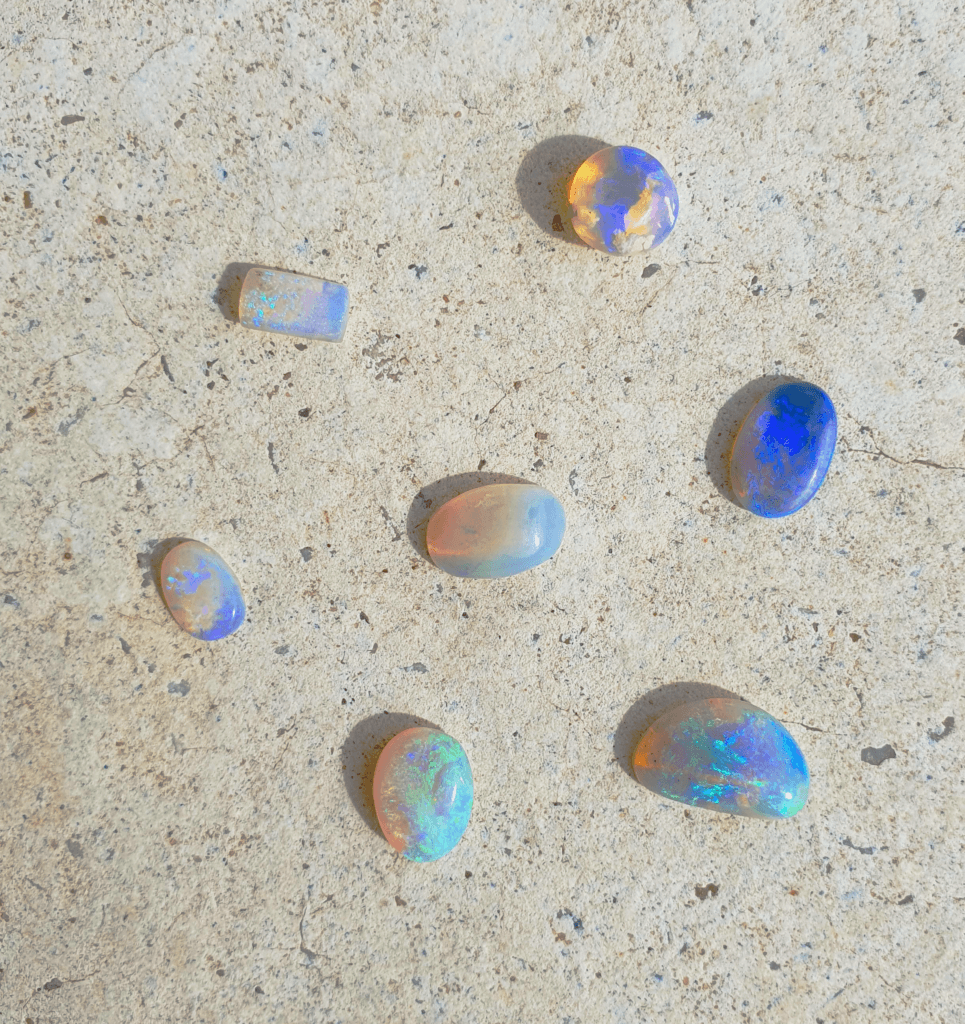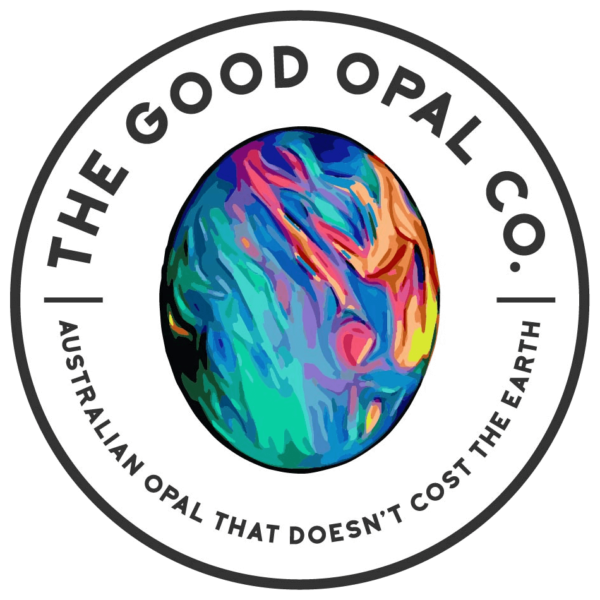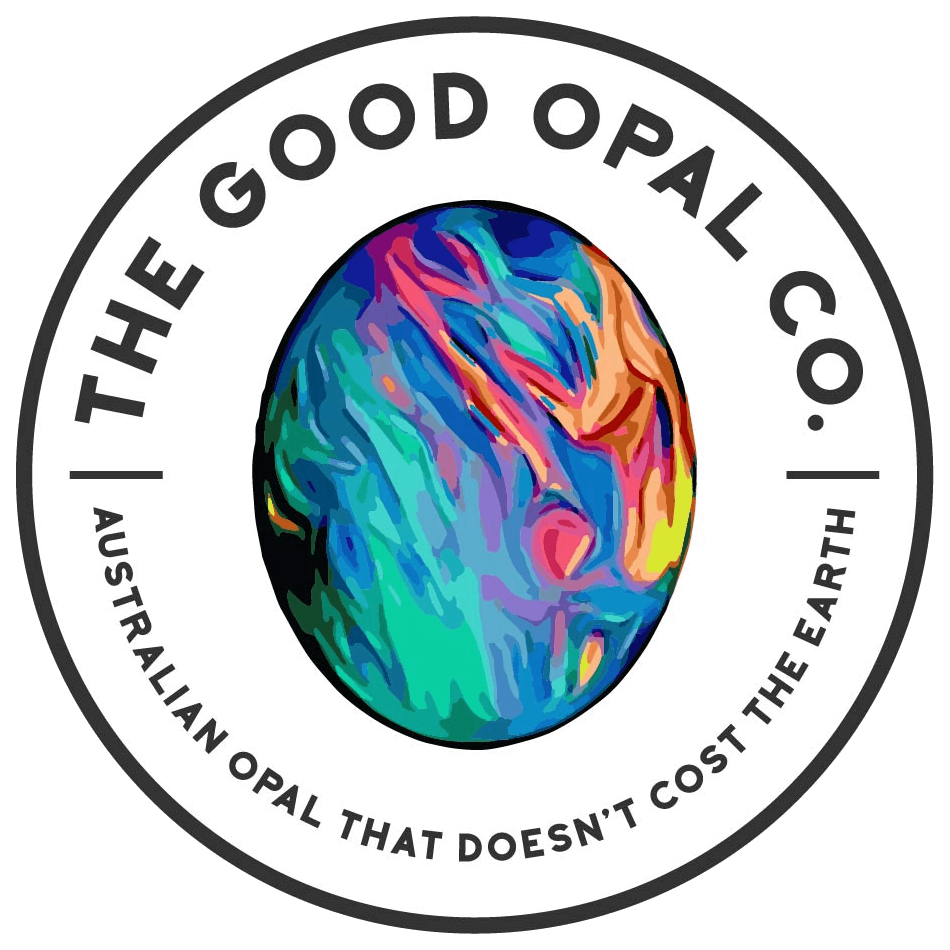Coober Pedy Opal was first discovered in 1915, when a man was prospecting for gold and came upon the white opal material. Although the first opal claim was staked soon after, it took time before opal mining took off in the area. Coober Pedy (derived from the Aboriginal words ‘Kupa Piti’ meaning ‘white man in a hole’) produces the most white opal and at the Good Opal co, our favourite type of white opal is Coober Pedy white opal fossils-shells. The reason being is that due to the semi translucent nature of shells, once fossilised even though the Opal fossils are white or milky, the vibrancy of their colour is breath taking.

Coober Pedy is the White Opal Capital of the world, producing over 80% of the world’s supply of White opals. White Opals are distinguished by their pale white or light body tone, and most commonly their gorgeous play of colour, red and pink in particular.
Coober Pedy White Opal
White opals are the most common form of opal found and often have white potch (colourless opal) left on the back of the stone. However, sometimes the entire stone will consist of colourful opal, and this is often due to the similarities that white opal bears to crystal opal. White opal isn’t always opaque white but can be milky or even close to transparent as seen in the picture to the right.
When a white opal is partially translucent, it often enhances the clarity and vibrancy of the colour, and thus the value of the stone. Therefore, a white opal which has some of the properties of a crystal opal will often have a higher value.
Funnily enough, where with black opal, red is the rarest and most valuable colour, on white opal red occurs much more often and with good brightness, the vibrancy of the red colouring can look beautiful against its pale backing.
Because of their pale body tone, white opals generally have less vibrant colour than boulder opals and black opals. They do not have the advantage of having a dark or black background which enhances the stone and makes the opal colour stand out, making them a lesser valued opal.
However, good quality white opal can be incredibly beautiful, and may fetch prices up to AUD $1000 per gram. There are many factors including brightness and pattern which determine the overall value of opal.
Coober Pedy Crystal Opal
Coober Pedy also famously produces vibrant crystal opal and exclusively marine fossil opals due the positioning of Coober Pedy where the great ancient basin once was. There is a fine line between white opal and crystal opal. Sometimes there is only a mild or medium translucence which may lead to the opal being classified as either a milky opal or a crystal opal.

Crystal opals are unique to other forms of Australian Opal. Why? Because unlike other forms of opal, in crystal opal the colour can run all the way through the entire stone including the base depending on the level of clarity there is.
The flash of colour in crystal opals is often incredibly vibrant and bright, even more so at times then Black Opal.
They have a high-purity level of Opal and when opaque (non-see-through) can also be well-known as White or Milk Opals. Compared with other Opals, they are composed of hydrated silica.
Purple colouring is the most common type of Crystal Opal. Red is the rarest crystal opal colour. Unlike other forms of Opal, Crystal Opal is formed without a base (like potch, ironstone, or sandstone). It is appreciated by many for its rarity and unique colour patterns. The most expensive variation is Black Crystal Opal from Lightning Ridge, Australia. They have some of the most amazing unique patterns and are well sought after by Opal collectors.
Coober Pedy Opal Formation
Of all gemstones, when opal was formed through cervices in the earth filling with silica rich water 100 million years ago, silica deposits were left behind. These deposits are spherical, and it is their stacking— layer upon layer—that creates gaps between the spheres. When the light passes through the spheres and their gaps, it splits like a rainbow from a prism. The result is the stunning patterns and displays of colour we see in opal.
Opal forms in cavities within rocks. If the cavity is there because part of what was once a living thing – for example, a bone or a shell – buried in the sand or clay before it turned to stone, then the opal can form a fossil replica of the object that was buried there. Coober Pedy produces fossils of saltwater or marine organisms, due to the positioning of the ancient Eromanga Sea 100 million years ago and has stunningly even produced opal fossil specimens worth up to 1 million Dollars.
You can Shop Our range of fossil opals in store at: https://www.goodopalco.com/product-category/opals/fossil-opals/.
Or our amazing white opals here at: https://www.goodopalco.com/product-category/opals/white-opals/

